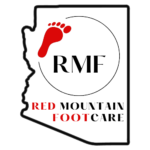Running With Arthritis In Your Feet

If you are one of the nearly 350 million people living every day with arthritis, you know the detrimental effects of the disease on virtually every aspect of your life. Thankfully, though, if you are committed to remaining active and continuing your favorite workout, there are ways to manage arthritis symptoms in feet, so you can still do what you love the most… running. Here’s how:
Start Slowly if You Are New
If you are new to running and are currently living with arthritis, it’s vitally important that you start a running regimen slowly, enacting warmups as the first part of your run to avoid arthritis symptoms in feet. This is absolutely essential to your success. This can include either walking or jogging slowly as you ease your body into your run.
Alternate Your Running with Other Activities
If you are an experienced runner but have noticed it’s difficult running with arthritis in toes, you should consider cutting your running back a bit to provide some relief for arthritis in feet. While running doesn’t itself cause arthritis, running too often can aggravate the symptoms. You can make some changes to your routine to reduce these negative symptoms. For example, if you normally run five days a week, consider cutting that down to three days. If you run on asphalt, consider a dirt trail alternative. Aim for softer surfaces because they are easier on your joints overall than harder surfaces like concrete. In addition, opt for some other types of exercises. You don’t have to give up running altogether, just alternate it with other options like swimming or other low impact activities.
General Running Tips For Running with Arthritis
Don’t misunderstand, you can still run even if you suffer from arthritis. You just might need to make some modifications by following the tips listed below to keep from aggravating your condition too much:
- Apply Heat: If you tend to experience joint pain after a run, prepare your joints with some heat. Apply warm towel compresses around 15 to 20 minutes before you begin your workout. This will loosen those joints and prewarm them for your upcoming exercise.
- Be Gentle: Again, it’s always a good idea to warm up your body before you begin running. This means that you should always start your run with a warm-up even if you are an experienced runner. Walking or even jogging slowly is always preferable to just out-and-out running when you first begin your session.
- Go Slow: If you are new to running, it’s that much more important that you take this entire process slowly. Start your running regimen by alternating speed walking or slowly jogging with running every 30 seconds or so until you gradually increase your time running. Keep track of your progress and ease your body into a full on running routine.
- Ice Afterwards: Once you have completed your run for the day, place an ice pack on your joints for 15-20 minutes or as long as needed to reduce inflammation from your run. Make sure you use a towel as a barrier between your ice pack and your skin.
Bottom Line: Running is Possible With Arthritis
As you know, living with arthritis isn’t always easy. However, you don’t have to sacrifice an exercise you love or want to try simply because you have this disease. If you follow the tips listed above and make sure your footwear— via orthotic inserts and the like— are helping you compensate for your arthritis, you can still have a successful running routine while living with arthritis. If your pain gets too severe, or you find yourself unable to continue running like before because of your arthritis, it is likely time to see your podiatrist to get the help you need to get back at it.
